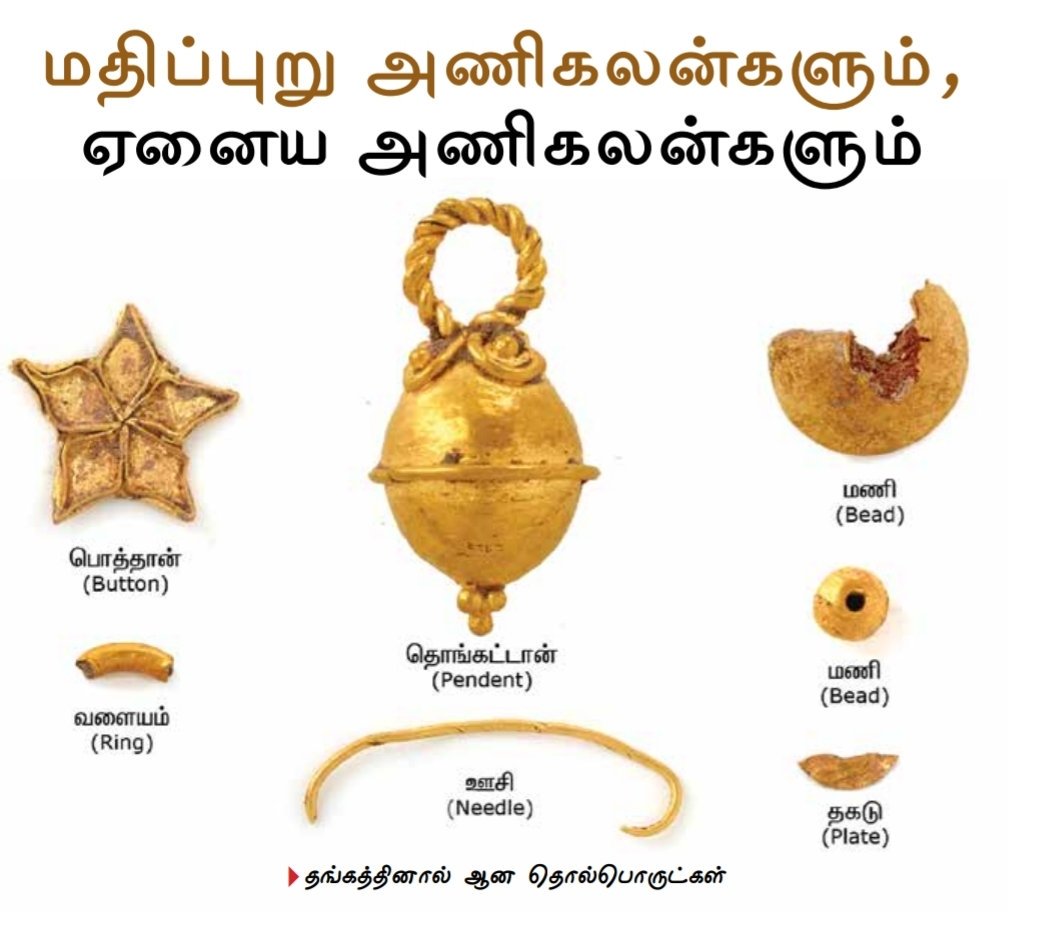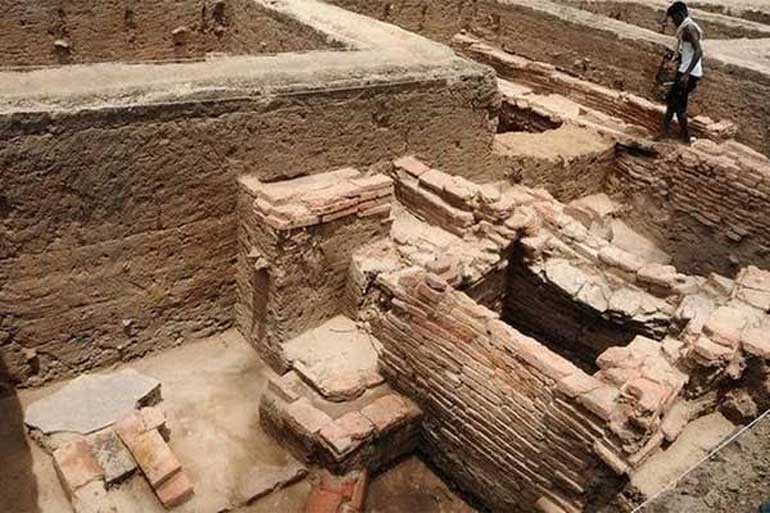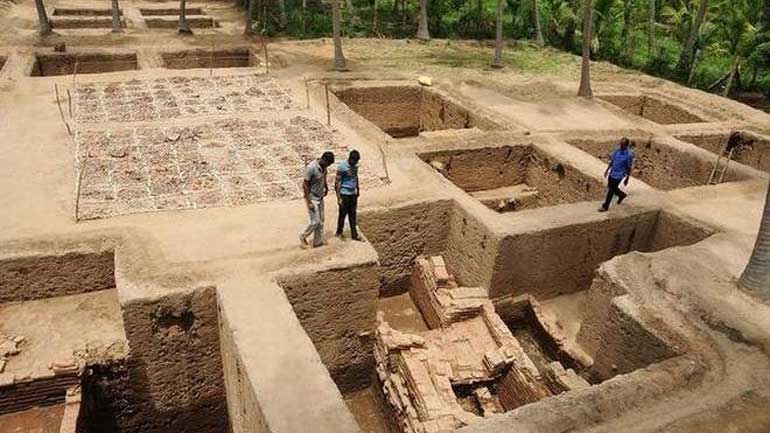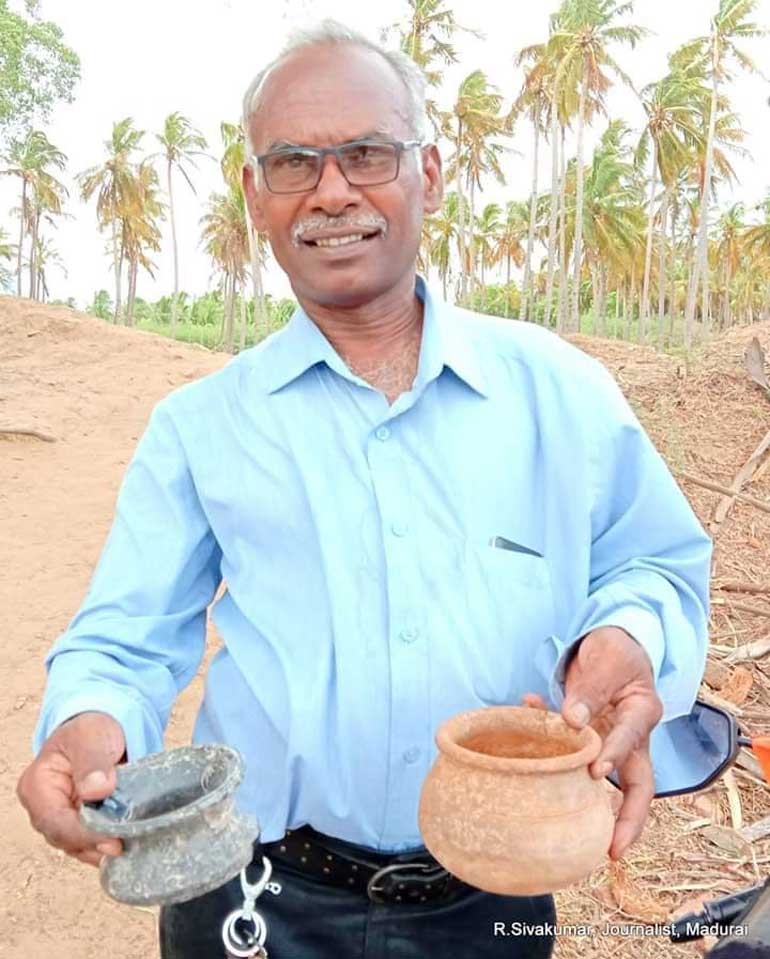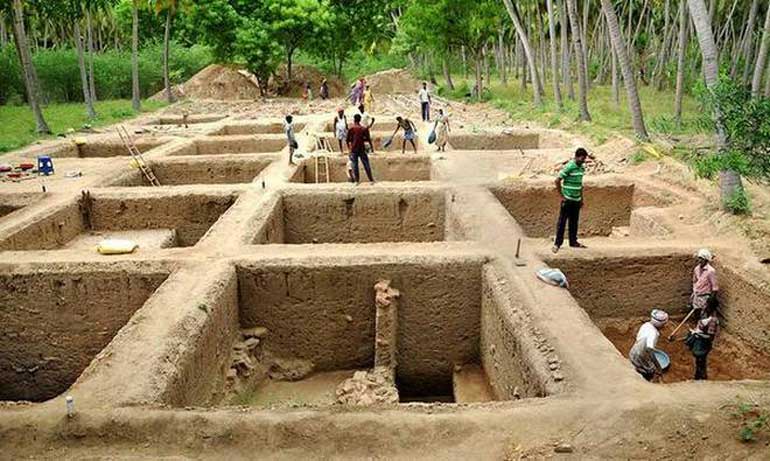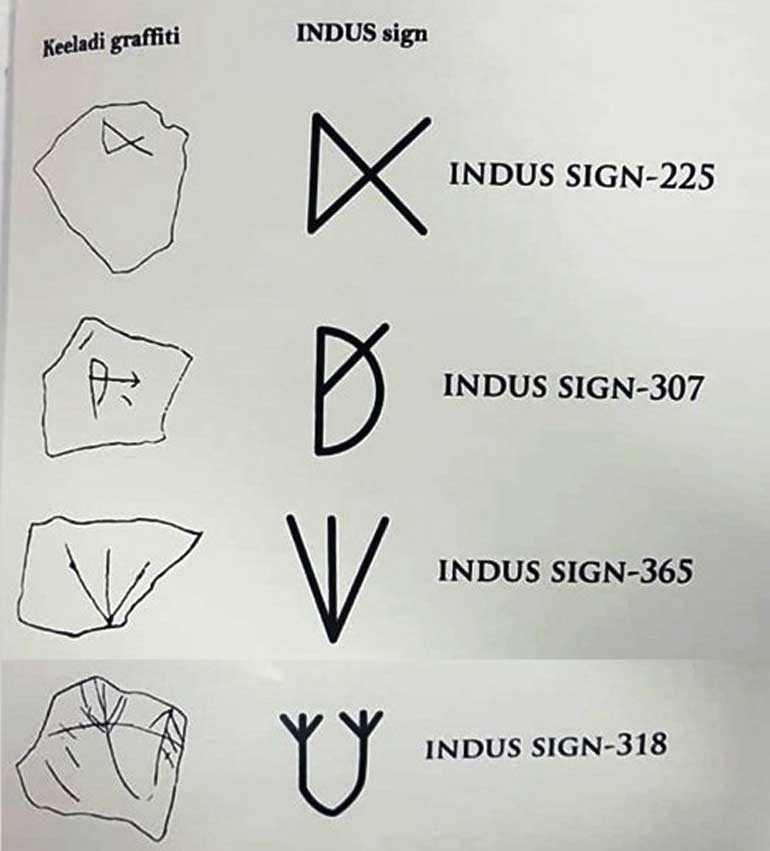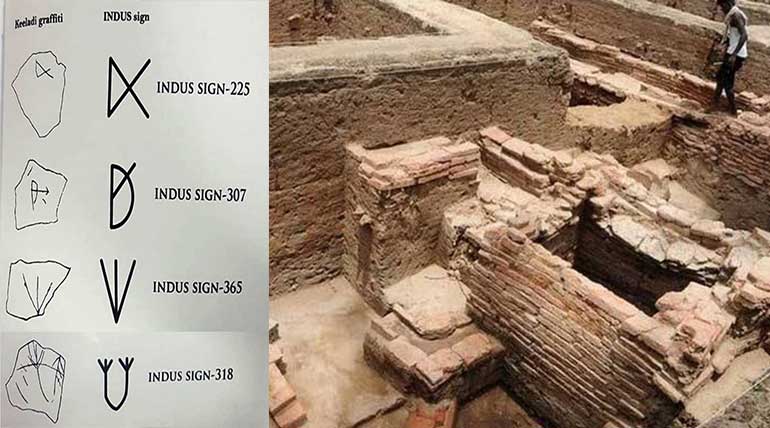Fourth excavation of Keeladi: Sangam period 300 years to 6th BCE
Vijayan Sankar (Author) Published Date : Sep 21, 2019 19:54 ISTTamil Nadu
The fourth excavation of Keeladi by Tamil Nadu Government predates the Sangam period 300 years to 6th BCE
Ma Fo K.Pandiarajan, Minister for Tamil Culture and Archaeology on 19th September released a report on historic new findings in Keeladi. The said report titled, Keeladi - An Urban Settlement of Sangam Age on the banks of River Vaigai, is the fourth excavation results of Keeladi. The efforts of the minister Pandiarajan did it after the central government stopped after the three excavations. Tamil Nadu Archeological Department (TNAD) takes the pride of unearthing the truth that the Sangam era is 300 years older in 6th BCE , than previously claimed by the central government excavation results.
How did the fourth excavation results found the Sangam period older than predicted
Tamil Nadu Archeological Department continued the excavations that were stopped by the Central government with an expenditure of Rs. 55 lakhs. The said 61 pages report described the excavation much deeper than the first three excavations. The second excavation results, which were only 6 meters in depth in Keeladi, reported the Sangam age as only 290 years old.
But with deeper excavations in an area of 1-acre land alone found 89 gold dies (Thaya Kattaigal). It establishes the enormous wealth and civilization prosperity of Tamils lived more than 2200 years ago in the 6th BCE. Commissioner of Archeology T. Udyachandran confirmed that the six-carbon samples found at a depth of 353 centimeters were sent to Beta Analytic Lab, Miami in the US. After the Accelerator Mass Spectrometry dating the existence of Sangam during the 6th BCE was confirmed.
Further findings in the Tamil Nadu Archeological Department report
- The most important factor to note in this report is the erstwhile name of Keezhadi has been changed to Keeladi
- It states that the second urbanizations after the Indus civilization of Gangetic plains happened on the banks of the Vaigai river in Tamil Nadu
- The Tamil - Brahmi script is also pushed back to the 6th century BCE
- The art of learning by writing was started in Tamil Nadu in the 6th century is confirmed by the 56 Tamil Brahmi inscribed potsherds recovered during its fourth evacuation by the Tamil Nadu Archeological Department
- These pottery specimens sent for Earth Science Department of Pisa University in Itlay confirmed that they were made only from local raw materials
- The report also confirms that the people of Keeladi used animals predominantly for agricultural purposes. It was found from skeletal fragments of Keeladi have been identified by the Deccan College Post Graduate & Research Institute in Pune.
- From analyzing its various recoveries, it was also confirmed that Keeladi had multiple stages of weaving industry from spinning, yarning, looming, weaving, and even dyeing.
The request of the Tamil people is for the Central Government to announce Keeladi as a heritage site. The central archeological department has announced various schemes worth Rs. 6,000 crores. But not one scheme for Tamil Nadu. Hence proper allocation of funds from it will help the Keeladi excavation that they stopped. Also, the other request is to start an archeology gallery like the one proposed in Vat Nagar in Gujarat.
Tamil Nadu Archeological Department with support from Minister Ma Fo K.Pandiarajan, is set for the fifth excavation to unearth further interesting and proud civilization of Tamil people lived 2200 years ago during the 6th BCE.
